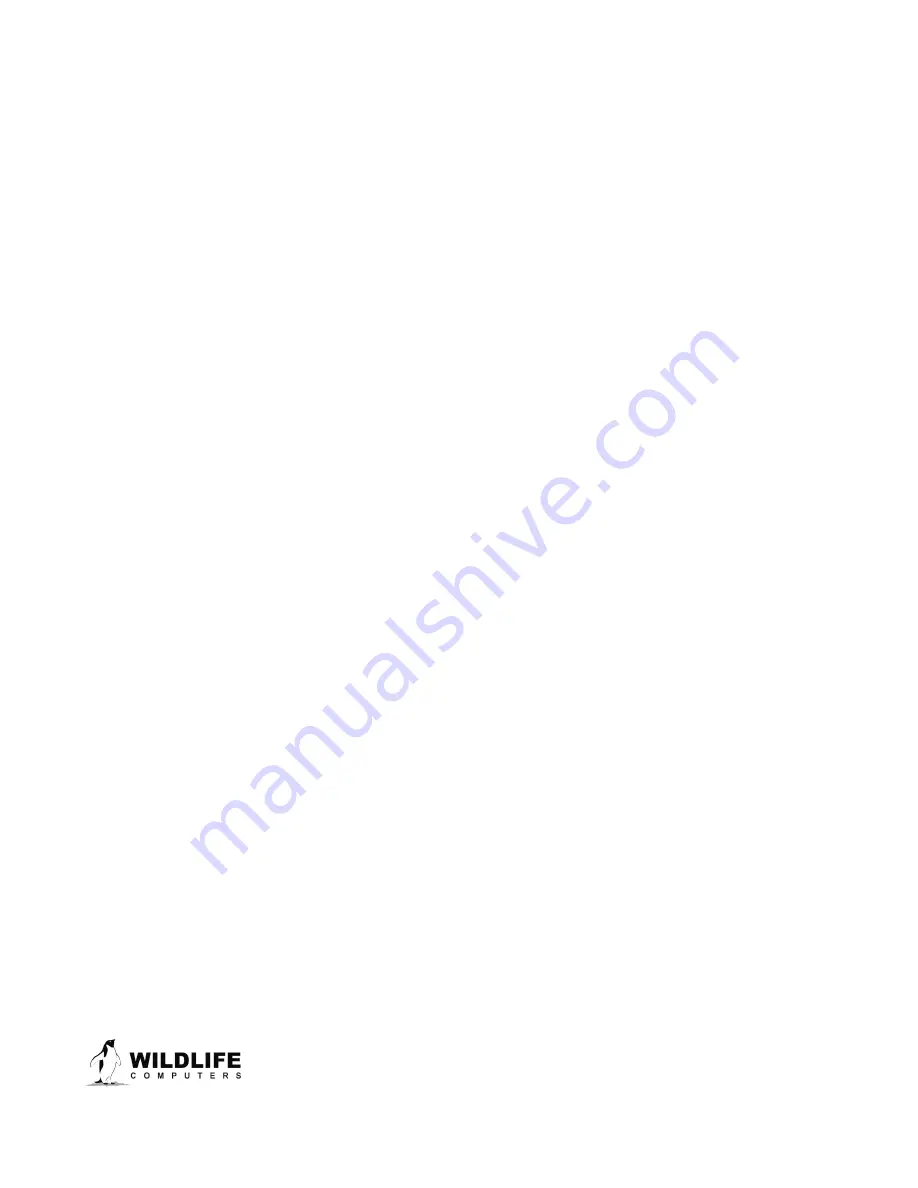
Page 8
The information contained in these documents is confidential, privileged and only for the information of the intended recipient and
may not be used, published or redistributed without the prior written consent of Wildlife Computers.
Additional Information
Glossary of Terms
•
Administrator—someone who has the authority to publish tag settings.
•
Argos ID—uniquely identifies a transmitter for the Argos system. The ID consists of a decimal
number and a hexadecimal (base 16) number.
•
Argos Location—a location generated by the Argos system from uplinks received during a
satellite pass. Get more information about how the Argos system works here:
http://www.argos-system.org/web/en/391-faq-general-questions.php
•
Argos Uplink—a radio transmission intended for the Argos satellite system.
•
Daily Data—generated from sensors over a fixed 24-hour period.
•
Data Message—created by the tag to transmit data through the Argos system. Each data
message is transmitted as payload in an Argos uplink. In order to increase the likelihood of its
reception by the Argos system, each message is sent a fixed number of times.
•
Data Products—the various types of data available from Wildlife Computer tags.
•
Deployment—the period when a tag is associated with an animal and actively collecting and
sending telemetry data.
•
Location Uplink—a transmission intended to generate an Argos location. These uplinks can
also carry a data message payload. Multiple uplinks are required to generate an Argos
location.
•
PTT—position tracking terminals. CLS assigns PTT ids for every tag.
•
Pinger—a UHF radio tracking beacon.
•
Start/Auto Start/Stop—tag states. When Started, will generate locations and/or collect sensor
data. Auto Start will allow the tag to Start using a magnet or when reading wet. Stop causes
the tag to do nothing until reconnected to Tag Agent.
•
Summary Period Data—generated from sensors during a defined number of hours.
•
Tag Agent—the program used to change tag states and select tag settings and connect a tag
to the Wildlife Computers Tag Portal.
•
Tagware—the software running on a tag.
•
Wildlife Computers Communication Cable—the Wildlife Computers communication cable
required by Tag Agent.
•
Tag Portal—the cloud-based service offered by Wildlife Computers for remote tag setup. A
historic record of tag settings and templates is maintained within the Tag Portal.



























